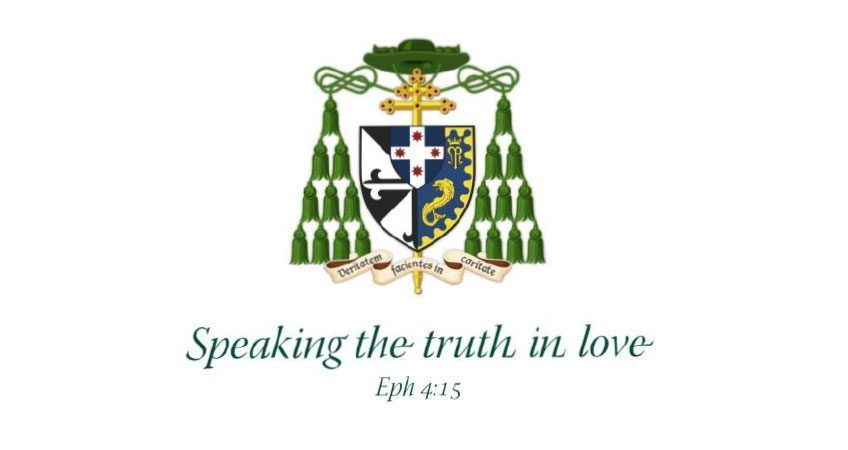Homily for Mass at Sancta Sophia College

Sydney University, Sydney
The Incorruptibles could be a Marvel Comic or derivative Hollywood blockbuster about superheroes like The Fantastic Four, The Avengers or The X-Men. But in fact the title is a Catholic one, given to those Catholic superheroes, the saints, whose bodies remain substantially incorrupt after their death, people who were so holy in life that God has seen fit miraculously to preserve their bodies from decay, indefinitely or at least for many years after their deaths.
One of those incorruptibles was St Clare of Assisi, whose memorial the Church celebrates today. At age 18, inspired by the words and deeds of St Francis of Assisi, Clare adopted St Paul’s attitude in our epistle – “For him I have accepted the loss of everything” (Phil 3:8-14) – and renounced family and possessions and self-will as Jesus counselled in our Gospel (Mt 19:27-29). She resolved to live the austere life of a nun, founding with Francis an order that came to be known as ‘the Poor Clares’. Dying on this day in 1253, she received the reward promised in our Gospel of hundredfold houses and family among her nuns and eternal life for herself (Mt 19:27-29). Seven years after she had been buried, it was presumed that all that would be left would be bones, but when the nuns and friars went to move those bones to a new place in St Clare’s Church in Assisi they were astonished to find her body looking as if she had just gone to sleep – and smelling sweetly. In the nineteenth century, when further renovations were made to the basilica crypt, it was presumed only dust would be left: again, there turned out to be rather more of her remains than expected after the passage of six centuries. This probably sounds to you like a Catholic version of C.S.I., but apart from being a scientific curiosity the Incorruptibles say something beautiful about the connection between purity of mind and incorruptibility of body, and about the preciousness of our bodily life to God, a life so precious He promises us the resurrection. Only last month I was able to visit the place and see the wax death-mask in the basilica and pray with Clare for you all at her tomb.
Our current Pope took his name from Clare’s companion, Francis of Assisi, the beloved figure famous for his passionate love of God, neighbour and creation and founder of the Franciscan family. St Clare was the first female member of that family and the two of them together are perhaps the most romantic saints in history. The myths of Francis and Clare have been fed by sources such as the 1972 hippie film Brother Son and Sister Moon, and by stories of the two dancing hand in hand, chasing butterflies, patting furry animals, and conquering the world with their weapons of meekness and poverty!
Sad to say, the real story is rather less romantic – and rather more down to earth. When Clare decided to join Francis, the first thing he did was cut off all her hair, dress her in sackcloth and hide her in various monasteries, so her family couldn’t steal her back and marry her off. Eventually, though, the family were reconciled to her new life: she obtained her own convent and most of the ladies of her family, her widowed mother included, joined up. Whether or not they lived happily ever after is hard to say… but the idea of a Franciscan family owes something to the presence of a real family so early in its history.
St Clare certainly didn’t go dancing on the mountain tops like Maria in The Sound of Music:first, because her sisters were completely bare-footed and, secondly, because they never left their monasteries. If St Clare and her Sisters were unlikely to be dancing on hilltops, they certainly weren’t doing it with men: they were, in fact, constantly fighting with the friars (which some say is a special charism of nuns), clergy and even the popes (who wanted the nuns to have a gentler rule of life). St Clare and her companionslived in terrible deprivation, an austerity unparalleled among the nuns of their time, an contrary to the advice of the weaker sex, men. They literally didn’t know where their next meal would come from: they relied upon the Providence of that Lord who feeds the birds of the air, the flowers of the fields, and hopefully widows, orphans and refugees. Clare’s destiny was closely configured to her Master, Jesus Christ. A great devotee of the Cross, she experienced a 27 year-long sickness, was often bedridden, and then suffered a long, drawn-out death – remaining patient throughout, to the inspiration of the bystanders. Unlike the romances of the films, Clare’s life involved all the usual struggles and more.
St Clare’s spirituality is very alien to our consumerist age. We look for comfort, possessions, pleasurable experiences, admirers; we need the constant stimulation of smart-phones and other devices; we want to get our own way and to have our autonomy respected above all; and we readily use and misuse our own and each other’s bodies and spirits. In his recent, much-discussed encyclical letter, Laudato Si: On Care for Our Common Home, Pope Francis critiques the “throwaway” consumer society and the attitude that treats people and the rest of creation like a smorgasbord to be gluttonously consumed and then excreted, leaving behind only ‘filth’. He echoes his predecessor Benedict who said the desertification of our natural landscape reflects the growing deserts in our hearts.
Pope Francis’ call for more self-restraint and care for one another and of creation is one of which St Clare would doubtless approve and which I hope finds favour among the young people of Sancta Sophia. Even in our age people rightly look to monks and nuns of all religions to stand back from the production-consumption rat-race, to be more detached, to take a more contemplative posture towards creation. Radical evangelical poverty, such as Jesus taught in our Gospel and Francis and Clare embraced does not deny goodness of creation or importance of property, industry, employment or commerce; rather, it challenges that acquisitiveness which ends up acquiring the owner, that possessiveness that means our possessions end up possessing us, that craving for security and more that stands in way of equitable sharing, charitable giving and just social change.
Our times are dominated by a technocratic-financial rationalism that values people only for their productivity, governments for their ruthlessness, economies for ensuring only the fittest survive, policies for their profitability, and so on. There is not much room here for the unproductive, powerless or useless, for the butterflies and rabbits and the human weaklings like them. Clare’s life declares that there are other things that matter: that being matters more than having, that people more than things. May St Clare and the recent encyclical inspired by her story inspire you also to live simpler, humbler, less greedy, more ascetical lives, even as you delight in all the good things of creation; and may your university years and your residency in this College set you up for lives of service and generosity to others.
Introduction for Mass at Sancta Sophia College
Sydney University, Sydney
It is a joy to be with you here at Sancta Sophia College for this evening’s Mass for the Feast of St Clare and the annual Archbishop’s Mass and Dinner. Thank you for your welcome.
I am pleased to acknowledge concelebrating with me His Grace, Most Rev. J. Michael Miller CSB, the Archbishop of Vancouver. In the 40 years since his ordination, he has accumulated multiple degrees of his own as well as six honorary doctorates, has taught theology in seminaries in Mexico and Rome, been a university president and been Secretary (which means 2IC) in the Vatican Congregation for Catholic Education. He has had many other interests and ministries, but it is because of his work in education that he was invited to Australia to give some lectures and for which I suggested he join us tonight.
I also welcome our concelebrating clergy; the College Principal Dr Maree Leech; Vice-Principal Maryanne Pidcock; Chair of the College Council Josephine Heesh; various Heads and Principals of Schools; members of the College Council; and members of the university community. Above all, I welcome the students of Sancta Sophia College.

